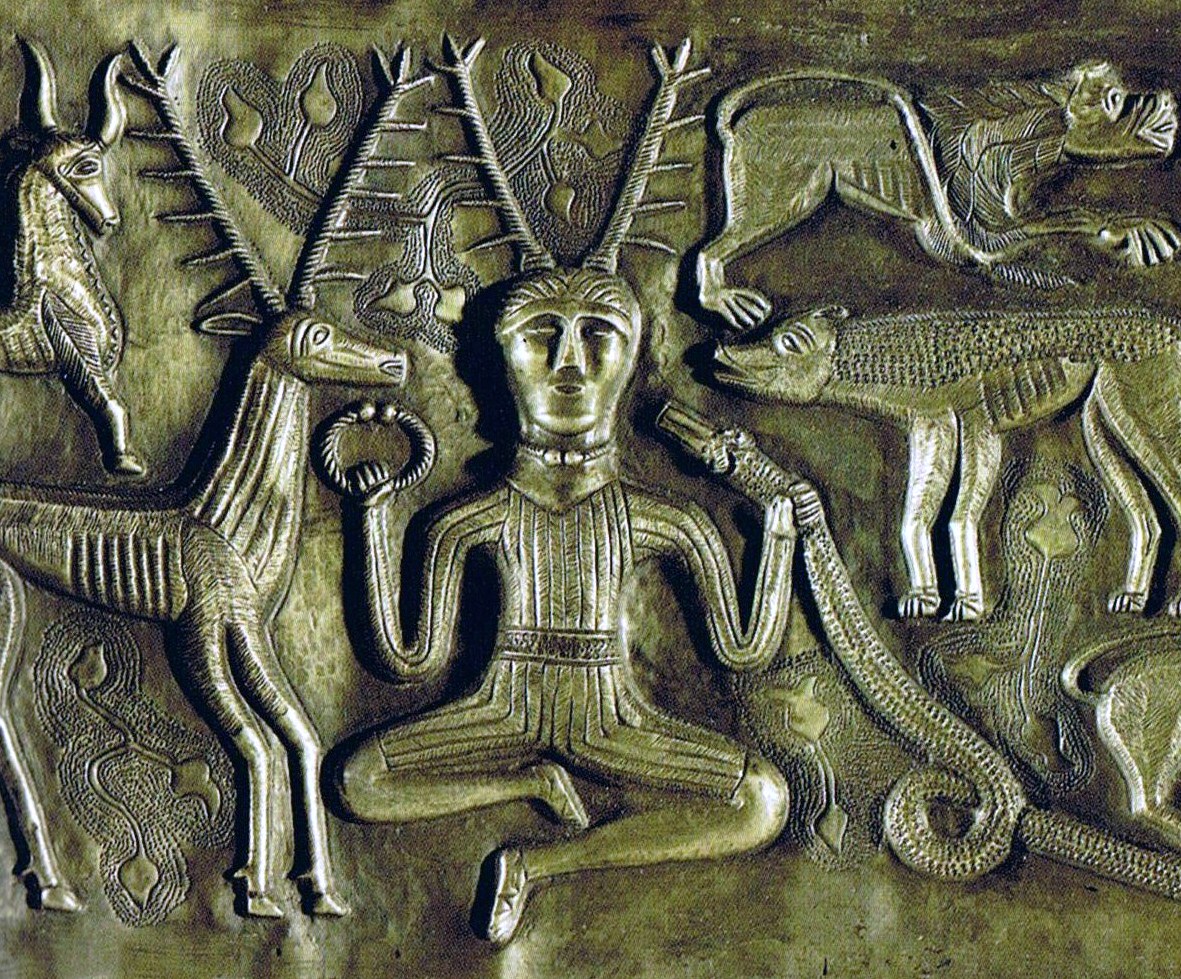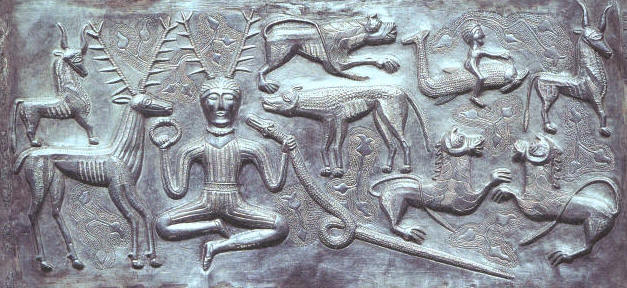THE WHITE STAG
It is said passed into legends of ancient old
Highlands and lowlands mythical tales told
Of a messenger other worldly bringing forth
To the cardinal compass point at
due north
Where a Snow Queen locked inside frozen time
Awaits encapsulated spirit of her love's rhyme
A prince of purity bravest hart of hearts
Elusive beauty trailing alone, separated, apart
Of a beatitude once upon a time in hands held
Carried ever forwards inside a capsule spell
The magnificent ‘White Stag’ bound to roam
Until hunted only for happiness can return home
Bewitched enchanted become the forests he walks
Black ravens shadow his pale silhouette with squawks
Privy to the knowledge of alchemist secrets cast
Icicled incantations entrapped, enveloped in past
White antlered Stag, a ghostly apparition, reminder
Of the Snow Queen's teardrop set encased binder
To her transformed recast angel her soul's soul
An eternity endured until the two rejoin as whole
Inside a speck of an instant sparkling shine
Released into metaphysical to at last realign

Gundestrup Cauldron (ca. 200 BCE to 300 CE)

The White Stag is a figure in many mythologies, often as the instigator of a quest (often with tragic consequences) or as a messenger from the Otherworld that appeared when one transgressed a taboo. It sometimes had a sun or cross between its antlers or on its forehead, and often the horns took the shape of a crescent moon. The image of a stag with a full moon between his antlers represented both the male (the antlers) and the female (the moon) aspects of the divine. Cernunnos, the Horned One, was a Celtic god of fertility, animals, wealth, and the underworld. He alternated with the moon goddess as the ruler over life and death, continuing the cycle of death, rebirth, and reincarnation, and was worshiped all over Gaul and parts of Britannia and Iberia; perhaps he had evolved from the figures in Paleolithic cave paintings in France that depicted a stag standing upright (or a man dressed in stag costume). Cernunnos was depicted with the antlers of a stag and sometimes carried a purse filled with coins, and he was often accompanied by a ram-headed serpent and a stag. The Romans sometimes portrayed him with three cranes flying above his head. The Horned God was born at the winter solstice, married the moon godde
ReplyDeletess at Beltane (May Day), and died at the summer solstice. When Pwyll Pen Annwn, the lord of Dyfed, trespassed into the hunting grounds of Arawn, lord of the otherworldly kingdom of Annwn, he drove a pack of dogs away from a slain stag and then let his own hunting dogs feed upon it, thus arousing Arawn's anger. After agreeing to change places for a year, Pwyll defeated and slew Arawn's rival Hafgan, giving Arawn complete overlordship. When they resumed their own identities they became friends because Pwyll had slept chastely with Arawn's wife the entire time. Later he married Rhiannon ("night queen"), a goddess of fertility, the moon, night, and death. At king Arthur's wedding feast, a white stag was chased into the hall by a pack of hounds; though bitten by one of the dogs, the stag escaped. Arthur sent one of his knights, Sir Gawaine, to recover the stag. His greyhounds chased it into the castle of Ablamar of the Marsh and brought it down; Ablamar killed two of the dogs and chased the others off in retaliation, since the stag had been given to him by his lover. Gawaine complained that the dogs had only done what they had been trained to do and that Ablamar should have taken hs anger out on their owner instead. The two knights then fought, until Gawaine struck Ablamar down and refused to spare his life. However, as Gawaine was in the act of striking him with his sword, Ablamar's lover threw herself upon him to protect him, and Gawaine beheaded her by mistake. Gawaine then spared Ablamar and sent him, with the dead dogs, to report the misadventure to Arthur, while he followed with the stag's head and the woman's head and corpse. Arthur's queen Guenever placed a geas on Gawaine that he must never refuse mercy and must always show honor and courtesy to ladies. The 12th-century lais of Marie de France, based on tales of the Celtic Bretons, featured a white doe with antlers that Guigemar mortally wounded; the dying deer told him that his own wounds could only be healed by a woman who suffered for love of him, and for whom he would suffer for love of her. He was then tended by a queen who had been isolated by her jealous husband. They spent a year and a half together, until the king found out, banished Guigemar, and locked his wife up in a marble tower. Before parting, the queen tied a knot in his shirt that only she could untie, and he gave her a belt tied with a knot that only he could untie. The queen escaped to Bretagne, where she was taken captive by Mériaduc, but he was unable to rape her due to the belt she wore. Eventually the two lovers were reunited, and Guigemar killed Mériaduc.
ReplyDeleteIn other cultures the motif was similar. Placidus was a Roman general under Imperator Caesar Nerva Traianus Divi Nervae filius Augustus ("Trajan") who saw a vision of a crucifix lodged between a stag's antlers and was told that he would suffer for Christ; he immediately converted to Christianity and changed his name to Eustáthios ("well stable") or Eustáchios ("fruitful/rich grain"). His wealth was subsequently stolen, a plague killed his servants, his wife was kidnapped, and his sons were taken away by a wolf and a lion. But, because he was steadfast in his faith, he was restored to his former prestige and reunited with his family. But when he refused to make a pagan sacrifice, in 118 emperor Publius Aelius Hadrianus Augustus ("Hadrian") condemned the entire family to be roasted to death in a bronze statue of a bull. In the late 13th century Kézai Simon wrote "Gesta Hunnorum et Hungarorum" to link his Magyars with the 5th-century Huns of Attila. In his account Hunor and Magor were the twin sons of the giant Ménrót and his wife Eneth, whose name was derived from the old Hungarian word "eney" (hind); other accounts claim their father was king Magog of the Scythians. Ménrót himself was modeled after Nimrod, a descendant of Kám, one of Noah's "most wicked" sons; after his disastrous attempt to build the Tower of Babel he moved to Persia, where Hunor and Mogor were born. Like their father they were prodigious hunters; in their unsuccessful pursuit of Fehér Szarvas, (the White or Silver Stag) in the Meotis marshes, each with 100 warriors, they discovered that the area was suitable for grazing cattle. After spending five years there they departed and "discovered that the wives and children of the sons of Belar were camped in tents in a lonely place without their menfolk, they carried them off with all their belongings as fast as they could into the Meotis marshes. Two daughters of Dula, prince of the Alans, happened to be among the children who were seized. Hunor took one of them in marriage and Mogor the other, and to these women all the Huns owe their origin."
ReplyDeleteThe Gundestrup cauldron, with five long rectangular inner plates, seven short outer ones (one is missing), and a round base, was a found dismantled by peat cutters in a dry section of a small peat bog called Rævemose (near the larger Borremose bog) in the Aars parish of Himmerland, Danmark, in 1891. Each 21 cm plate is 97.0% pure silver and filled with repoussé (hammered from beneath to push the silver out) motifs of animals, plants, and pagan deities, but there is a substantial amount of gilding, tin solder, and glass for the figures' eyes. Generally it is dated to the La Tène III period and represents the worlds: Midgaard (the earth, where humans lived), Asgaard (the nearest celestial world, containing the sun, moon, planets, and constellations, where the gods lived, and Udgaard (Out-Yard), the Milky Way galaxy where the giants (Jaetter) lived. The featured plate shows a horned figure with a torque (a large metal neck ring) around his neck and another in his right hand (symbols of wealth) and a horned serpent (a creation symbol) in his left hand. He is probably the Celtic god, Cernunnos, the lord of the animals, a Gaulish prototype of the later Irish figure Cú Chulainn in Táin. His tight-fitting pants and belted coat resemble the clothing worn by southeastern European horse tribes, and the shoes with zig-zag bindings are the same as worn by figures found in Thracian silver repoussé from Sãlistea and Durentsi. The silverworking techniques are unknown in the Celtic regions but are consistent with the Thracian sheet-silver tradition. To his left and right are a hound and a stag, and a bull is on the stag's back. (Another bull is in the upper left corner.) Next to the bull are a dolphin or sturgeon ridden by a human, and a lion or boar. Two more lions are in the lower left. The level plane of the eyes of Cernunnos, the stag, and the hound perhaps are visual retelling of the shape-shifting of the two Irish bulls Donn Cuailnge and Finnbennach, especially since the pictorial sequence (ending in the two bulls) are in the same order as in the tale.
ReplyDelete